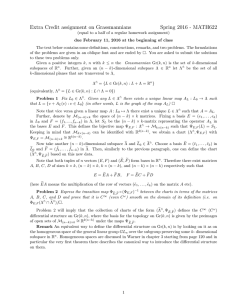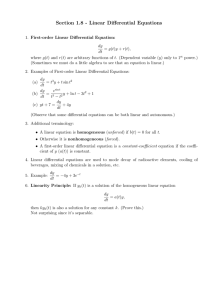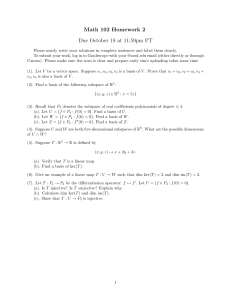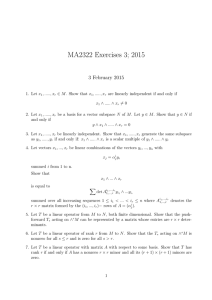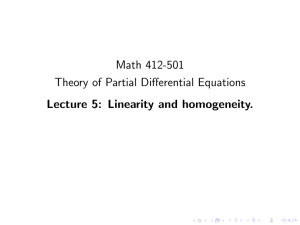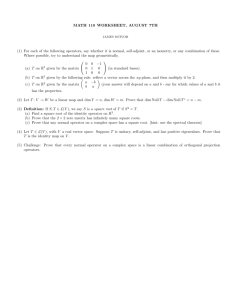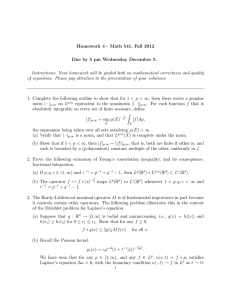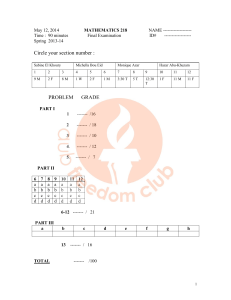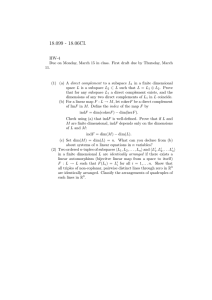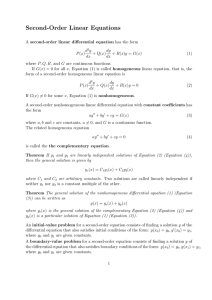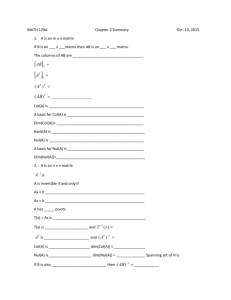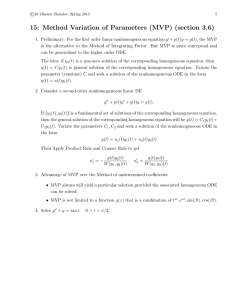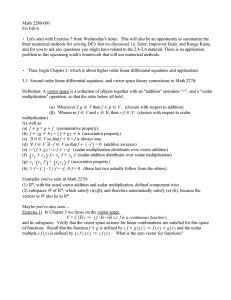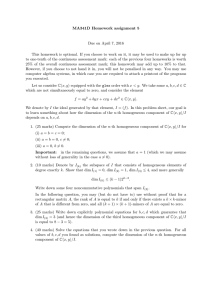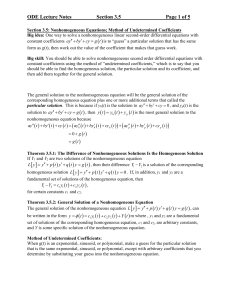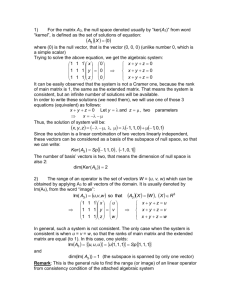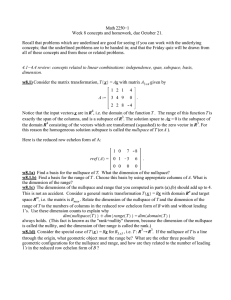8.4. Linear Differential Equations Of Order N
advertisement
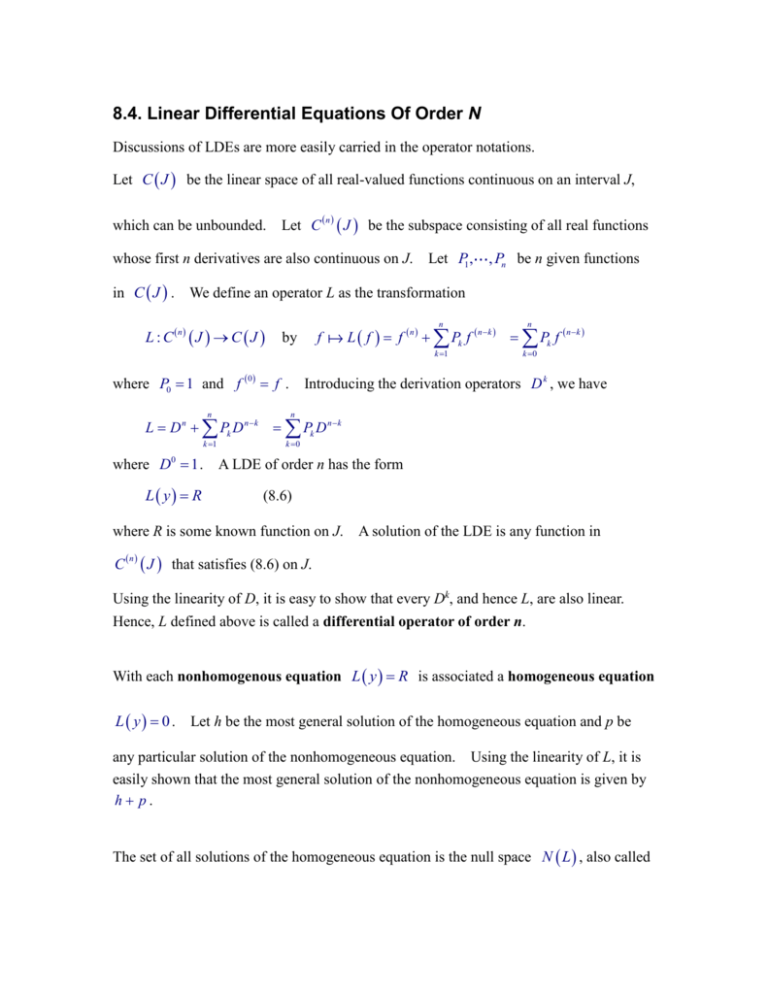
8.4. Linear Differential Equations Of Order N Discussions of LDEs are more easily carried in the operator notations. Let C J be the linear space of all real-valued functions continuous on an interval J, which can be unbounded. Let C n J be the subspace consisting of all real functions whose first n derivatives are also continuous on J. Let P1 , , Pn be n given functions in C J . We define an operator L as the transformation L : C n J C J by 0 where P0 1 and f f . f n n k 1 k 0 L f f n Pk f n k Pk f n k Introducing the derivation operators D k , we have n n k 1 k 0 L D n Pk D n k Pk D n k where D 1 . 0 L y R A LDE of order n has the form (8.6) where R is some known function on J. A solution of the LDE is any function in C n J that satisfies (8.6) on J. Using the linearity of D, it is easy to show that every Dk, and hence L, are also linear. Hence, L defined above is called a differential operator of order n. With each nonhomogenous equation L y R is associated a homogeneous equation L y 0 . Let h be the most general solution of the homogeneous equation and p be any particular solution of the nonhomogeneous equation. Using the linearity of L, it is easily shown that the most general solution of the nonhomogeneous equation is given by h p. The set of all solutions of the homogeneous equation is the null space N L , also called the solution space of L y 0 . The solution space is a subspace of C n J . Although dim C n J may be infinite, dim N L is always finite. dim N L n , the order of L [see §8.5]. In fact,


